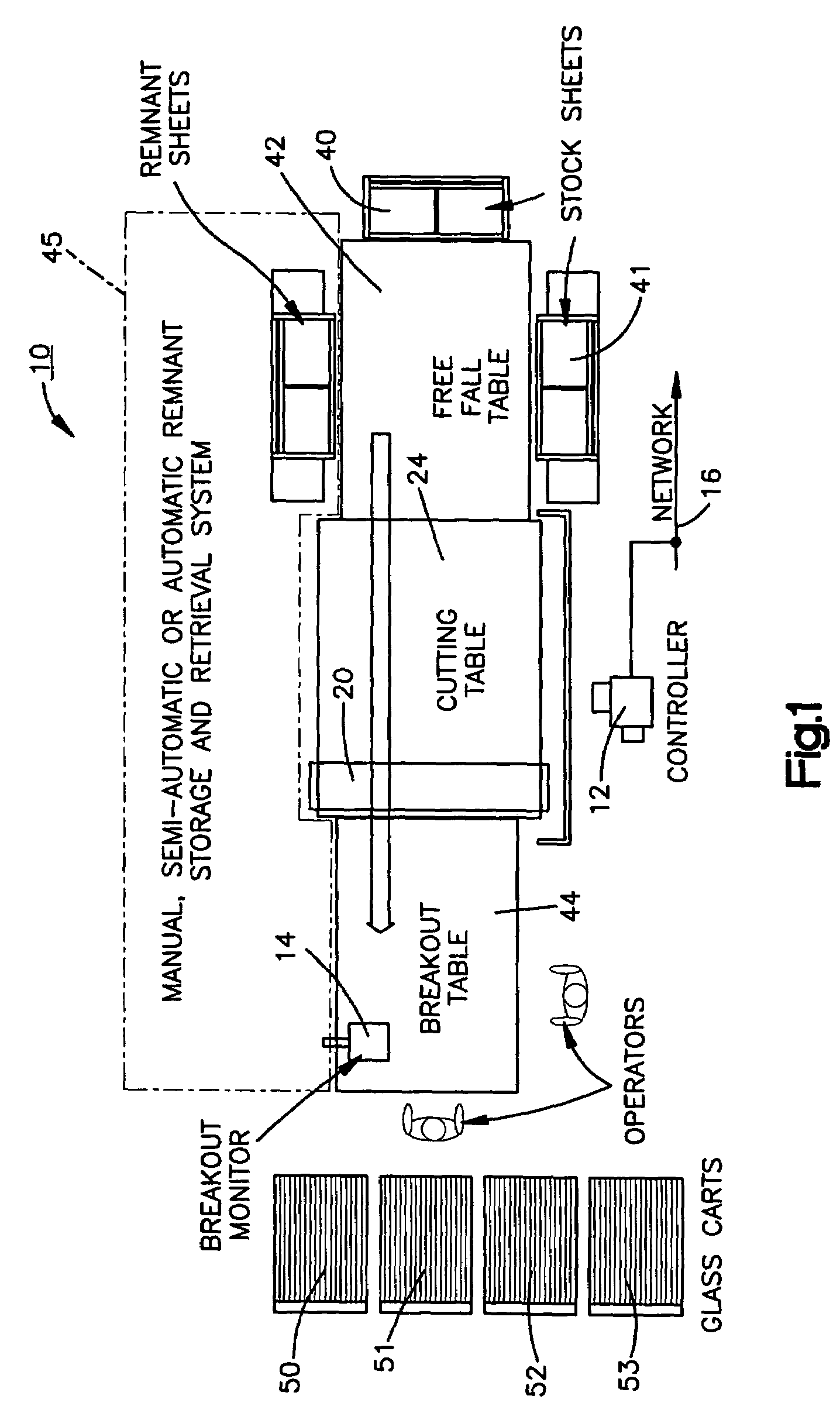Glass optimization
a glass and optimization technology, applied in the field of glass optimization, can solve the problems of one or more manufacturing operations problems, waste of glass, and high manufacturing cost, and achieve the effects of increasing yield, increasing storage requirements, and reducing quality
- Summary
- Abstract
- Description
- Claims
- Application Information
AI Technical Summary
Benefits of technology
Problems solved by technology
Method used
Image
Examples
Embodiment Construction
[0018]The disclosed invention provides an integrated software and apparatus solution for increasing the yield of production runs during window or door manufacture, or other manufacture requiring glass lites. An exemplar system automatically recognizes and optimizes Low Yield Sheets by adding glass lites from other production batches as well as lites entered or selected at a cutting station 10. The exemplary system also automatically creates, tracks, selects and re-cuts remnant sheets of glass if the process is unable to add sufficient lites to eliminate Low Yield Sheets from a production batch.
[0019]The FIG. 1 cutting station 10 includes a controller 12 that provides the cutting station operator an option of easily selecting filler lite sizes that can be automatically inserted into each production batch. The controller is coupled to a display or breakout monitor 14 that graphically alerts the cutting table operator(s) which cart and slot to place each lite as it is cut. The controll...
PUM
| Property | Measurement | Unit |
|---|---|---|
| size | aaaaa | aaaaa |
| time | aaaaa | aaaaa |
| sizes | aaaaa | aaaaa |
Abstract
Description
Claims
Application Information
 Login to View More
Login to View More - R&D
- Intellectual Property
- Life Sciences
- Materials
- Tech Scout
- Unparalleled Data Quality
- Higher Quality Content
- 60% Fewer Hallucinations
Browse by: Latest US Patents, China's latest patents, Technical Efficacy Thesaurus, Application Domain, Technology Topic, Popular Technical Reports.
© 2025 PatSnap. All rights reserved.Legal|Privacy policy|Modern Slavery Act Transparency Statement|Sitemap|About US| Contact US: help@patsnap.com



